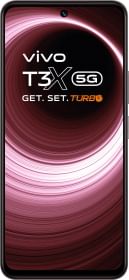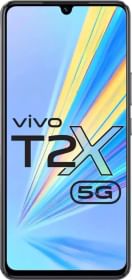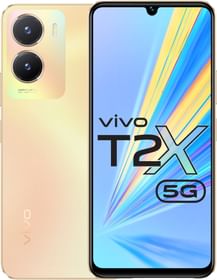OLED TVs have been around for a decade putting a tough fight against other technologies. We have come a long way in terms of OLED technology. With CES 2024, it just got better. The latest in OLED technologies is the META Technology from LG Display. In its second generation, the OLED META technology uses Micro Lens Array (MLA) to offer breathtaking viewing angles and insanely bright displays.
So, what’s the buzz all about? What is MLA and what does Meta stand for? CES 2024 unveiled a slew of new devices and technologies like never before and here’s what arrived in the latest OLED technology. Read along.
What is a Micro Lens Array?
To give a bit of context why Micro Lens Array (MLA), you need to understand one of the primary issues that OLED technology faces. Displays made using OLED have a perceived lack of brightness compared to LCDs and Mini LEDs. What I mean by perceived lack of brightness is that these panels appear less bright for the users.
A display with higher brightness will show more colors on-screen which is where OLED TVs have to be brighter than ever. This is where Micro Lens Array (or MLA) comes into play supercharging the brightness levels a screen can produce that ultimately punches its color reproduction capabilities.
MLA technology belongs to LG Display and uses a part of LG’s EX and META technology (that we will get to in a bit). MLA can be explained as a uniform pattern of tens of billions of minute lenses (or microlenses) that are arranged to reduce the loss of light due to internal reflections. Since there is more light at disposal, the TV’s screen is capable of transmitting more light or brightness to the user and thus, more colors making these displays vivid and vibrant.
As per estimates, a 77” OLED TV with MLA sports 42 billion microlenses which is more than 5,000 per pixel. Over the years, LG has improved the OLED technology making them more efficient than their past models. It is also because MLA reduces wastage of light within the panel increasing the perceived brightness while being 22% more energy efficient than standard OLED panels.
At present, only LG Display manufactures OLED panels with MLA and almost every TV brand across the globe sources their units from LG Display, a display-making arm of LG enterprise. There are a lot of buzzwords and marketing terms in use and LG Display introduced another year i.e. META Technology to address its third and fourth-gen MLA-based OLED panels. But hey, what’s META now?
What is META?
It’s easy to get lost when addressing technologies and their newer generation. We just discussed what’s MLA and now, we will extend the article to address what’s META.
LG Display introduced META during CES 2023 and an upgraded META Panel 2.0 in CES 2024. As per the company, META is a combination of two technologies i.e. the hardware part comprises MLA (we already showed you what it is) plus a software component loaded with a brightness-enhancing algorithm called META Booster.
What this does is, it makes the OLED panels brighter, more energy efficient, and with better viewing angles. In simple words, MLA is a hardware implementation while META is a software implementation. This explanation does help differentiate between the two technologies, right?
The exact brightness-enhancing algorithm remains wrapped shut from the public, of course. Turns out all LG TVs including the likes of LG G3 and LG M3’ actually support these functionalities. However, LG Display uses different nomenclature to address these technologies such as Light Control Architecture. But hey, you won’t get to use MLA and META on panel TVs, these are exclusive features.
Why Micro Lenses?
You might wonder, why micro lenses?
OLED panels are known for their blackest black and brightest white (pun not intended). That’s the very reason why OLED TVs look better than LCDs and LEDs.
A conventional OLED panel uses a color filter which uses some of the light. Additionally, the OLED material is delicate enough that if you push too much energy to get extra brightness, it would reduce its lifespan dramatically. Moreover, the glass used in the production of OLED panels causes the light to reflect internally causing some of it to get trapped and lost. This is another blow to the overall brightness of the OLED panel causing the perceived brightness to the viewer lower than actual.
LG Display uses an array of Micro Lens Array which are tiny convex lenses measured in a few micrometres. These lenses are so tiny that LG Display fits 5,000+ lenses per pixel which totals 42.4 billion MLAs on a 77” OLED panel. Yes, the maths is staggering.
MLA & META Works in Tandem
According to LG Display, MLA works like a charm curbing the internal reflection of light and instead, emitting it to the users thereby increasing the perceived brightness. These tiny convex lenses save so much of brightness that the panel’s efficiency increases by 22% which is a significant amount to tap into when compared to the previous generations of OLED panels.
It’s not just MLA but the META Booster algorithm adds the software layer heightening both screen brightness and color reproduction in real time. This is where you end up with deeper blacks and brighter whites.
As aforementioned, MLA uses a uniform pattern of tiny convex lenses that are arranged in a dragonfly-like structure. What this does is, the OLED panels with MLA and META get better viewing angles. It is as good as 160° compared to QLED TVs.
Comparing META Panel Gen 1 and META Panel Gen 2
At CES 2023, LG Display introduced third-gen OLED with MTA and META Panel Gen 1 that was capable of producing up to 2,100 nits of peak brightness.
A year later at the latest CES 2024, LG Display introduced an upgraded META Panel Gen 2 with MLA+ that collectively brings the peak brightness to a whopping 3,000 nits. The units to comply with strict EU regulations that don’t pack in the software META implementation, have improved peak brightness to 2,300 nits as well which is 10% higher than last gen.
META Technology 2.0 uses an upgraded MLA Plus (MLA+) based on big data. The hardware upgrade uses an optimized pattern of micrometer-scale lenses to reduce internal reflections further resulting in higher light volume and uniformity.
LG Display has also fine-tuned the algorithm dubbed as the META Booster Algorithm paired with Detail Enhancer that analyses each scene from the input video feed. It further optimizes power delivery to the respective section of the panel for revolutionary brightness. The algorithm takes care of the color brightness to refine the picture quality by manifold.
META Panel Gen 2 or META Technology 2.0 is the current pinnacle of the latest OLED display tech capable of bolstering LG Display’s position in the OLED TV panel market.
You can follow Smartprix on Twitter, Facebook, Instagram, and Google News. Visit smartprix.com for the most recent news, reviews, and tech guides.


































